In recent years, ransomware attacks have become a leading cause of business disruption.
Today, they affect not only large multinationals or critical infrastructure, but also small and medium-sized businesses, professional firms, and public organizations.
The impact goes beyond simple system downtime: it includes loss of sensitive data, reputational damage, privacy-related fines, and financial consequences that can compromise business continuity.
Addressing a ransomware crisis means implementing a structured and coordinated response that involves technical, legal, and organizational expertise.
Successfully managing an attack is possible, provided you have a tested response plan, reliable backups, and a strategic approach focused on recovery and prevention.
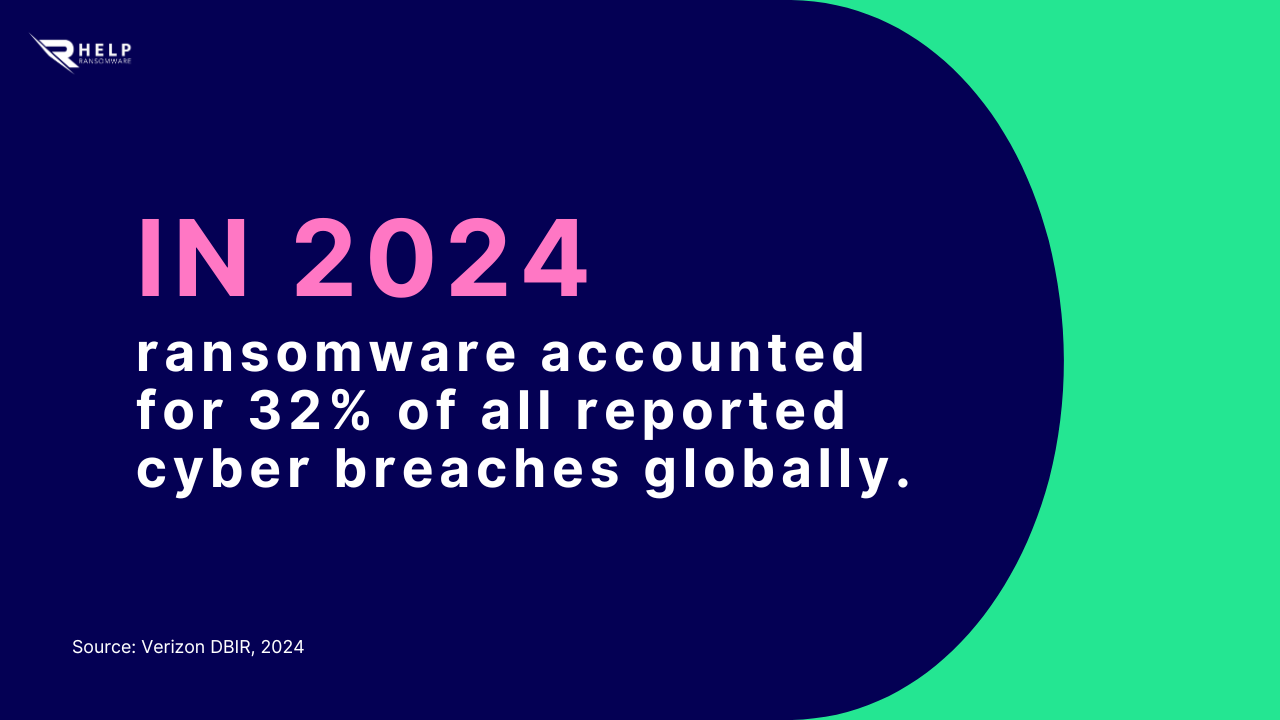
Identify the attack and contain it promptly
Every minute is crucial. The first hours after infection determine the extent of the damage and the possibility of recovery. The first step is to confirm the nature of the attack: modified extensions, locked files, or ransom messages are unmistakable signs.
At this stage, the goal is to contain the infection . The National Cyber Security Centre (NCSC, 2024) indicates that isolating the infected system within 15 minutes of detection reduces the spread of malware by up to 70%. It also emphasizes that timely isolation is the primary factor in containing the damage. Recommended actions include:
- disconnecting infected systems from the company network and the Internet;
- blocking active VPNs and remote access;
- suspension of shared cloud services until further review.
The goal is to stop the lateral propagation of the malware and keep the data intact.
At the same time, it’s essential to collect logs and technical data to understand how the attack occurred.
A thorough investigation not only helps contain the incident but also prevents the same vulnerability from being exploited again .
Digital forensics and incident response procedures—now an integral part of business continuity plans—help you maintain control of the situation without losing crucial information.
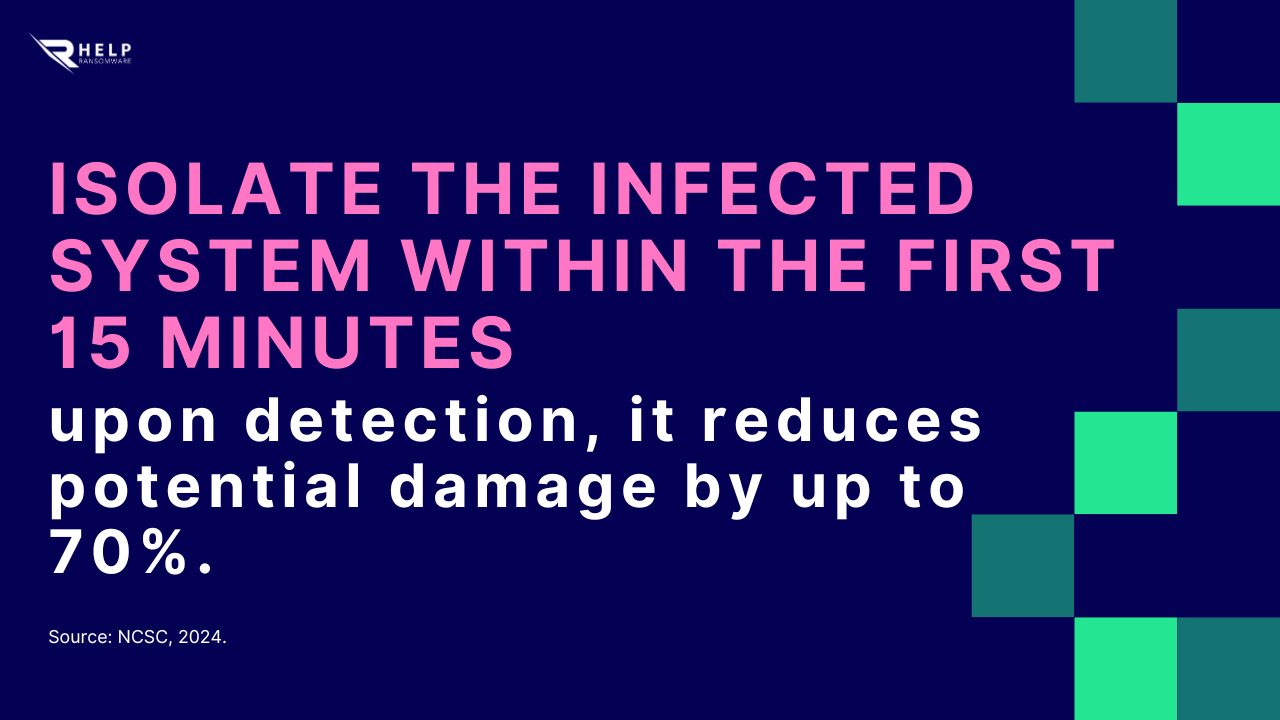
2. Activate the response plan
A ransomware crisis must be managed like an operational emergency.
Every company should have an Incident Response Plan (IRP) , a protocol that defines roles, priorities, and internal communication channels.
Once an attack is confirmed, the plan must be activated immediately, involving a multidisciplinary team—IT, legal, communications, and management.
CISA (Cybersecurity and Infrastructure Security Agency, 2024) recommends maintaining a secure line of communication and documenting every step: every decision made during those steps could impact the success of the recovery.
Current regulations, such as the NIS2 Directive , also require major incidents to be reported to the competent authorities within 24 hours.
Managing communications transparently with regulators and stakeholders is an integral part of mitigating reputational damage.
A well-constructed response plan serves not only to react, but to reduce reliance on improvised decisions .
HelpRansomware provides cyber crisis management services , supporting companies and public administrations in technical and communication coordination during the incident.
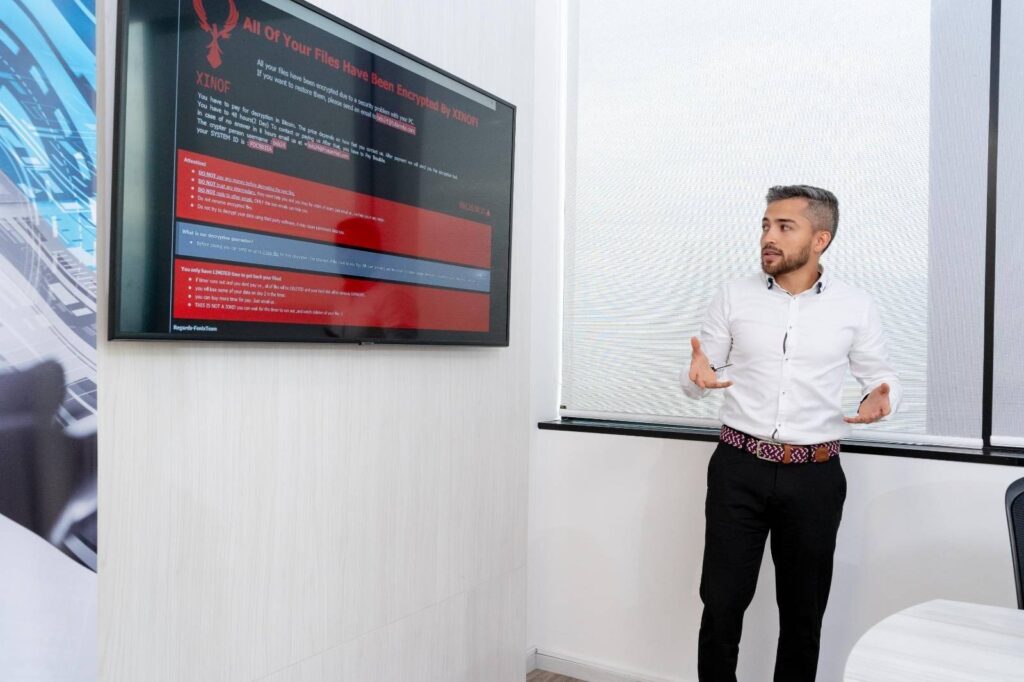
Immediate Ransomware Help
Don’t let ransomware hold your business hostage. Our experts are ready to recover your data and secure your systems.
Assessing the impact and planning recovery
Once the spread has been contained, it is necessary to understand what has been compromised and how severely .
A thorough analysis must determine whether sensitive data has been exfiltrated, which systems are unusable, and whether backups are intact.
According to MTI (2024) , 72% of affected companies experience at least two days of total downtime, with average costs of over $5 million in recovery, reputational damage, and lost productivity.
This stage requires both a technical and strategic approach : it’s necessary to establish recovery priorities (payment systems, ERP, customer database) and define RTO and RPO parameters . The most resilient organizations are those that have already tested their recovery scenarios, verifying the timing and methods of reactivation.
This is where preventive planning comes into play .
An infrastructure with disconnected backups and regular validation procedures can withstand an attack with greater security and faster recovery times.
HelpRansomware develops customized business continuity plans to ensure the smooth recovery of your most critical systems.
Safely restoring: the most delicate phase
Restoring means bringing systems back to life, but doing it incorrectly can reopen the door to attack. The
CISA and ENISA guidelines emphasize three fundamental principles:
- Use only verified, offline backups.
Copies must be isolated, encrypted, and regularly tested. A 2025
ENISA guide emphasizes that at least one backup version must be immune to tampering and unreachable from the network during an attack. - Restore in a controlled environment.
Systems must be reloaded and tested in a separate clean room : a closed environment to ensure there are no residual malware. Only after hash and integrity checks can the data be reintroduced to production servers. - Monitor the post-recovery phase.
After the reboot, close monitoring is required: log analysis, detection of anomalous activity, and connection verification.
NIST recommends that each recovery phase include resilience checks to prevent reinfection.
At this stage, the difference is often made by preventive preparation : companies that periodically test their backups drastically reduce the risk of recovery errors.
Analyze, learn, improve
A well-managed crisis doesn’t end with recovery: it ends with understanding.
Every attack must be analyzed to understand what went wrong: human error, a technical vulnerability, a misconfiguration, or a protocol not followed.
ENISA publications on cyber crisis management describe this phase as “lessons learned”: an essential time to update procedures, fill gaps, and strengthen internal security culture.
At the same time, the NIS2 directive requires organizations to maintain documented and regularly tested business continuity and disaster recovery procedures .
This means simulating realistic scenarios, verifying response times, and updating technical measures (segmentation, multifactor authentication, patch management).
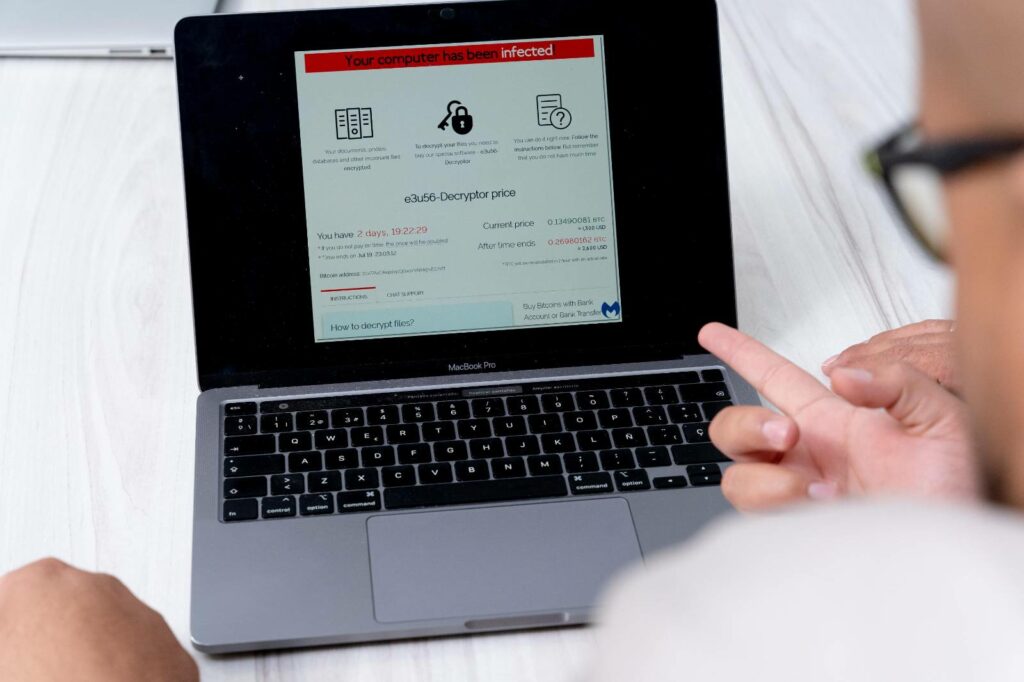
Immediate Ransomware Help
Don’t let ransomware hold your business hostage. Our experts are ready to recover your data and secure your systems.
After the crisis: building a lasting defense
Once the emergency is over, the strategic phase arrives: turning the incident into a strength.
Strengthening digital infrastructures, adopting advanced controls, and collaborating with specialized centers of expertise allow for security that is not just reactive, but proactive.
In Italy, the CSIRT (Computer Security Incident Response Team) coordinates the national incident response and provides operational guidance to affected organizations. Collaborating with these organizations or with partners specializing in digital security helps harmonize the response to international standards and ensure regulatory compliance.
The ransomware crisis, as destabilizing as it is, can become an opportunity to strengthen security governance.
Any company that successfully restores its systems in a secure and documented manner gains not only continuity but also credibility in the eyes of its customers and partners.
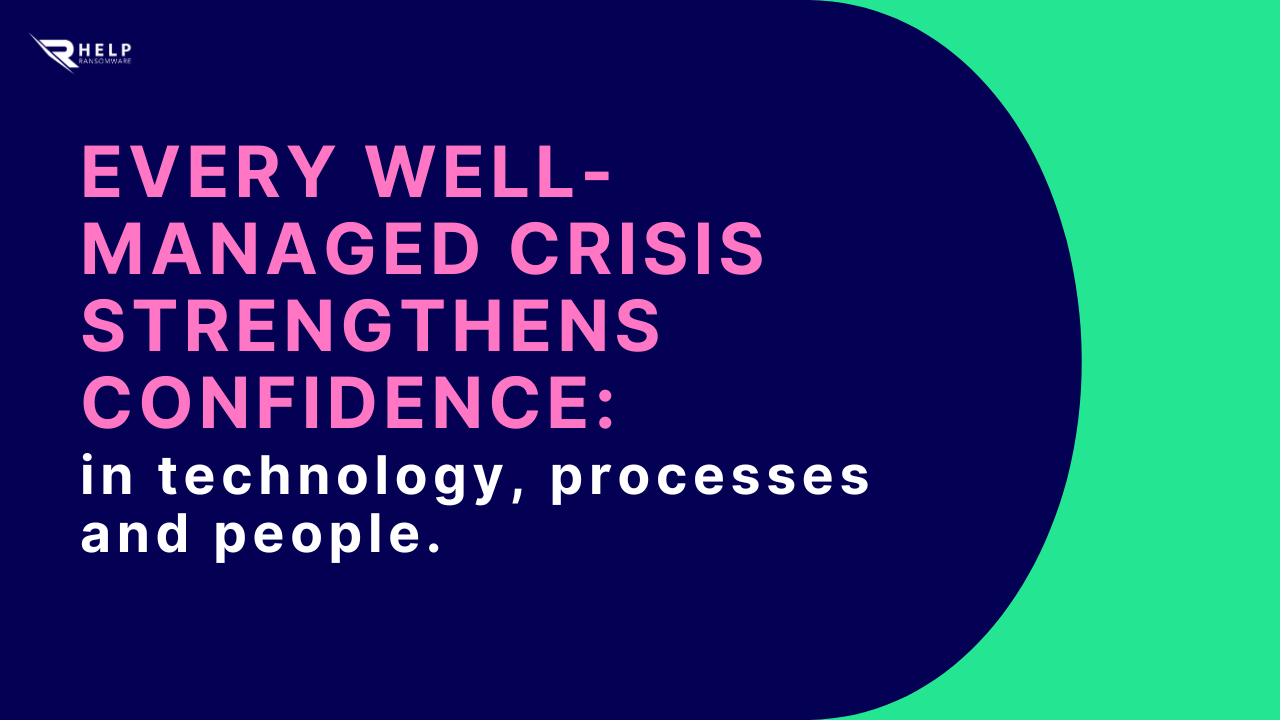
HelpRansomware’s role in crisis management
Every cyber incident is different, but the need to respond competently and promptly is always the same. In these situations, HelpRansomware supports companies and organizations through all phases of the crisis, providing technical, operational, and strategic support.
The team operates according to certified procedures and internationally recognized methodologies (CISA, NIST, ENISA), ensuring comprehensive management. Services include:
- Digital forensics and attack containment – identifying the entry vector, collecting digital evidence, securing infected systems, and monitoring to prevent reinfection;
- Ransomware data recovery – advanced decryption or reconstruction of compromised files, using proprietary methodologies and secure, isolated environments ( clean rooms );
- Operational recovery and backup validation – data integrity verification, compatibility testing, and support for the progressive recovery of critical systems;
- Communication and crisis management – assistance in drafting mandatory notifications to authorities and stakeholders, in compliance with the NIS2 Directive and data protection regulations;
- Prevention and training – Security audits, attack simulations, and customized training courses to increase staff awareness and reduce the risk of future incidents.
HelpRansomware’s goal is to empower every organization to regain control, restore trust, and strengthen its digital resilience .
Not just respond to an attack, but turn it into a foundation for building a stronger, more durable defense.
Conclusion
A ransomware crisis is a complex challenge, but also a test of an organization’s digital maturity. Companies that manage to weather it without completely disrupting their operations are those that have invested in preparation, coordination, and resilience .
The most recent statistics show that the difference is not made by the company size, but by the ability to anticipate and document procedures:
- have tested and isolated backups,
- constantly train staff,
- maintain an updated response plan,
- and rely on qualified partners in crisis management.
In this context, HelpRansomware’s role is not only technical but strategic: it supports organizations in the transition from reaction to prevention , integrating security, governance and digital culture.
Resilience, after all, isn’t built in moments of calm, but in how we react to difficulties. And a ransomware crisis, if addressed methodically and competently, can become the starting point for more robust security and more informed business management.
Frequently Asked Questions (F.A.Q.)
HelpRansomware provides a broad spectrum of solutions covering the entire crisis management cycle: ransomware data recovery / decryption, ransomware removal, ransomware consulting / incident response planning, cybersecurity training and awareness, data breach / reputation protection .
HelpRansomware adopts an approach that begins with a free initial assessment to identify the type of ransomware and the encryption structure.
Only if the intervention is successful do the client incur any costs: if we fail to recover your data, you will not be charged.
We operate in isolated environments and use certified techniques to ensure that recovered files are intact.
Yes. HelpRansomware specializes in data recovery without giving in to criminal demands. The goal is to avoid payment and recover data legally and safely.
Yes, we operate 24/7 to activate emergency response as quickly as possible. Recovery times depend on the complexity of the attack, the state of backups, and the type of ransomware, but rapid intervention is the priority to minimize damage.
Yes, the first step is a free consultation and case analysis to assess the situation and propose an intervention plan.
Absolutely. HelpRansomware doesn’t stop at recovery: it also offers post-incident support for auditing and defense strengthening, staff training, ransomware prevention plans, and data breach protection .
You have active and reliable channels at your disposal. Get the details from Contact Us on HelpRansomware: we’re available 24/7.Or visit the data recovery service page: Ransomware Data Recovery .



